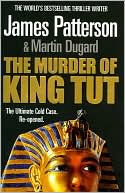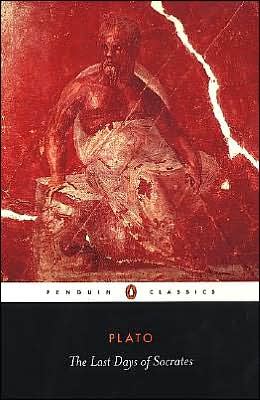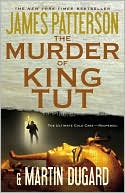War with Hannibal: Authentic Latin Prose for the Beginning Student
This edition of Book III of Eutropius’s Breviarium ab urbe condita is designed to be a student’s first encounter with authentic, unabridged Latin prose. Written in a simple and direct style, the Breviarium covers the period of Roman history that students find the most interesting—the Second Punic War fought against Carthage—and the original Latin text is supplemented with considerable learning support. Full annotations on every page, detailed commentary on grammar and syntax, and a glossary...
Search in google:
This edition of Book III of Eutropius’s Breviarium ab urbe condita is designed to be a student’s first encounter with authentic, unabridged Latin prose. Written in a simple and direct style, the Breviarium covers the period of Roman history that students find the most interesting—the Second Punic War fought against Carthage—and the original Latin text is supplemented with considerable learning support. Full annotations on every page, detailed commentary on grammar and syntax, and a glossary designed specifically for the text allow students to build both their confidence and their reading skills. The commentary in the back of the book is cross-referenced to the following commonly used textbooks: Wheelock’s Latin, 6th EditionLatin: An Intensive Course by Moreland and FleischerEcce Romani II, 3rd EditionLatin for Americans, Level 2Jenney’s Second Year LatinAllen and Greenough’s New Latin Grammar Macrons have been added to the entire text in accordance with the vowel quantities used in the Oxford Latin Dictionary. Additional resources include an unannotated version of the text for classroom use, supplementary passages in English from other ancient authors, and appendixes with a timeline of events and maps and battle plans. The text may be used in secondary schools and colleges as early as the first year of study. The copious translation help, notes, and cross-references also make it ideal for independent learners.
War with Hannibal\ Authentic Latin Prose for the Beginning Student \ \ By Brian Beyer \ Yale University Press\ Copyright © 2009 Yale University\ All right reserved.\ ISBN: 978-0-300-13918-1 \ \ \ Introduction\ This edition of Book III of Eutropius's Breviarium ab urbe condita presents authentic, unabridged Latin prose for the beginning student. The text's subject matter covers one of the most interesting and important periods in Roman history: the second of three wars Rome fought with Carthage. As background to the reading, summary descriptions of Rome's prior conquest of Italy and each of the three Punic Wars are below (Punic is from the Latin word for Phoenician, since the Carthaginians were descendants of Phoenician settlers). For detailed notes on the Second Punic War, see the Commentary. \ Conquest of Italy\ During the two centuries prior to its conflicts with Carthage, Rome had come to dominate nearly the entire Italian peninsula through a combination of conquest and diplomacy. It had come to terms with or defeated its principal neighbors in Etruria, Latium, Umbria, and Samnium and had established a complex and long-lasting network of alliances (the Greek cities of southern Italy were the last to succumb to Roman authority, which was to have significance in Rome's later struggles with Carthage). The strength of these alliances-and their capacity tosupply the Romans with a seemingly endless supply of troops-was to be a critical factor in Rome's emergence as a world power. See Appendix B, Principal areas: Italy and Mediterranean environs.\ First Punic War, 264-241 BCE\ Carthage was a Phoenician colony on the northernmost coast of Africa that had established a trading empire in the western Mediterranean. Rome and Carthage had concluded treaty relations at various times between the sixth and fourth centuries, and Carthage had even aided Rome in the Pyrrhic War of 280-275 BCE. However, the positions of Rome and Carthage as the most important powers in the West made it inevitable that the two sides would become rivals. The First Punic War was fought between 264 and 241 BCE in an attempt to drive the Carthaginians from Sicily. The war was fought primarily at sea (the Romans were forced to build their first significant fleet of warships) with heavy casualties on both sides. The Romans slowly won the upper hand, however, and peace was concluded, with the Carthaginians agreeing to leave Sicily and to pay indemnity to Rome. A few years later, Rome succeeded in forcing the Carthaginians out of Sardinia and Corsica. The conclusion of the First Punic War thus marked the beginning of Roman administration of overseas provinces.\ Second Punic War, 218-201 BCE\ Twenty years of uneasy peace was broken in 219 BCE, when the Carthaginian general Hannibal besieged Saguntum, a Roman ally in Spain. Without waiting for a Roman declaration of war, he took the Romans by surprise by marching over the Alps into Italy with troops and war elephants. After initial Carthaginian victories, Q. Fabius Maximus Cunctator adopted a policy of harassing Hannibal's army and avoiding a general engagement. The abandonment of this stratagem resulted in devastating Roman losses at the Battle of Cannae in 216. From then on, the Romans pursued a policy of attrition in Italy, while aggressively prosecuting the war in Spain and Sicily and ensuring that Hannibal did not receive critical reinforcements. When the Romans invaded Africa in 203 under the command of P. Cornelius Scipio, the Carthaginians were forced to recall Hannibal from Italy. The Carthaginians under the command of Hannibal were defeated at the Battle of Zama in 202, and peace was concluded the following year. As with the conclusion of the First Punic War, Rome was now in possession of new overseas provinces, marking another step forward in its eventual conquest of the Mediterranean basin.\ Third Punic War, 149-146 BCE\ Carthage, however, made a remarkably quick economic recovery, and the animosity felt toward them by the Romans continued (perhaps most famously illustrated by the fact that the powerful Roman senator Marcus Porcius Cato ended every speech with Carthago delenda est [Carthage must be destroyed]). When Carthage attacked the Roman ally Masinissa in 150 BCE, Rome declared war the following year and sent an army to Africa. After a quick surrender, the Carthaginians refused the Roman demand to vacate their city. Carthage then endured a Roman siege until 146 BCE, when Scipio Aemilianus stormed and sacked the city. The city was destroyed, and its territory became the Roman province of Africa.\ History of the Breviarium ab urbe condita\ Eutropius's Breviarium ab urbe condita-from which the account of the Second Punic War in this text is taken-was written in the latter half of the fourth century CE, during the reign of the emperors Valens and Valentinian. The work, which consists of ten books, begins with the foundation of Rome in 753 BCE and ends with the death of the emperor Jovian in 364 CE. It was written for an aristocracy whose first language was often not Latin, and who needed a succinct and readable history of Rome. It immediately became popular both in the West and, in translation, in the Byzantine world. Its popularity in both the Middle Ages and the Renaissance is attested to by the survival of over eighty manuscripts, eleven from before the fifteenth century. The Breviarium even makes it onto Petrarch's short list of favorite books (Libri mei peculiares) from 1333.\ In the modern era, the Breviarium became a staple of the school curriculum in both the United States and Britain, and was very often the first Latin text a student read. Many nineteenth-century educators regarded Caesar's Commentarii de bello Gallico as too difficult for use as a first Latin text, and saw the Breviarium as an ideal "bridge text." The Report of the Committee of Twelve of the American Philological Association in 1899, for instance, suggests the use of Eutropius for reading just before Caesar. Similarly, Arrowsmith and Whicher's popular nineteenth-century reader includes an entire three books of Eutropius before moving on to Caesar.\ The Breviarium enjoyed a publication history from the eighteenth through the early twentieth century comparable to or greater than almost any other Latin text read in schools. In 1902, for example, there were no fewer than fourteen different editions of the Breviarium in print in the United States and Britain. By contrast, the same year there was a combined total of only ten editions of all works by Nepos in print. Furthermore, a number of editions of Eutropius enjoyed continuous reprints throughout the first half of the twentieth century. It was not until the late 1950s (a time when there was a new emphasis on introducing increasingly adult-age Latin students to Cicero and similar writers as soon as possible) that the last school edition of the Breviarium finally went out of print.\ Life of Eutropius\ Little is known about the life of Eutropius. Apparently, he was from a wealthy but not senatorial family and was given a good education. He began a career as an imperial clerk under the emperor Constantine. We learn from a comment in the Breviarium itself that he served under the emperor Julian in his expedition against the Persians in 363 CE. Under the emperor Valens (to whom the Breviarium is dedicated), he was promoted to the senior imperial Secretariat (magister memoriae). His survey of Roman history is his only work that has been preserved.\ (Continues...)\ \ \ \ \ Excerpted from War with Hannibal by Brian Beyer Copyright © 2009 by Yale University. Excerpted by permission.\ All rights reserved. No part of this excerpt may be reproduced or reprinted without permission in writing from the publisher.\ Excerpts are provided by Dial-A-Book Inc. solely for the personal use of visitors to this web site. \ \
Contents Foreword by Dale Grote....................ixPreface....................xiAcknowledgments....................xvIntroduction....................xviiEutropius's Breviarium ab urbe condita, Liber tertius Text and Notes....................3Unannotated Latin Text....................23Commentary....................30Vocabulary....................65Appendix A: Timeline of the Second Punic War....................81Appendix B: Maps and Battle Plans....................83Appendix C: Roman Magistracies....................92Bibliography....................95Text Credits....................97Index of Selected Grammatical Constructions....................99








